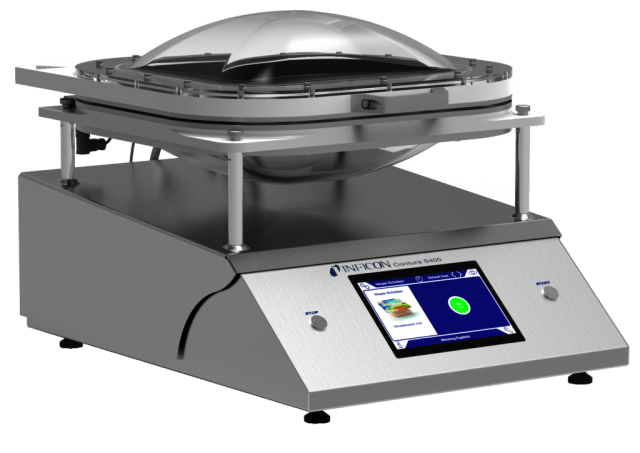Tests on flexible packaging containing solid compounds without destroying the samples...
One of the major problems with most leak tests is that they use an immersion fluid or dyes to highlight the leak or leaks more easily.
When these fluids or dyes come into contact with the samples, they do not allow the samples to be put back into the sales circuit. This is known as destructive testing.
If your products don’t cost too much to produce and you don’t carry out thousands of tests on your products, the costs may be negligible, but when you want to carry out tests on products that cost thousands or even millions of euros, companies can’t afford to destroy the samples for each test…
So we need to find test technologies that don’t destroy the products.
One such technology is based on a differential pressure sensor.
The principle is quite simple: we create a vacuum in an enclosure containing our product. We maintain this vacuum very precisely and analyse whether or not the vacuum is maintained.
If the packaging is leaking, when the vacuum is applied around it, the air contained in the packaging, which is at or close to atmospheric pressure, will escape through the leak, causing a “loss of vacuum” or a “loss of negative pressure” in the enclosure.
If the sensor is very accurate, very low vacuum losses can be detected, corresponding to very small leaks of the order of a few tens of microns.
Our partner INFICON’s Contura S400 and S600 operate on this test principle.
This means you can carry out a non-destructive test to DIN EN 1779 on products packed in flexible or rigid packaging containing solid compounds. This is because the technology embedded in the device would be damaged if liquid were to enter the device circuit.
This technology is very close to the ASTM F2338-09 standard.
This technology can be adapted to a wide range of products
Our solution adapts to your needs
Our CONTURA chamber allows these tests to be carried out quickly and efficiently.
The test takes less than 15 seconds and the result is independent of human interpretation, which can lead to confusion or uncertainty.
With the CONTURA, the result cannot be called into question.
Other test methods
- ASTM D3078 – Immersion tests on flexible packaging
- ASTM D4991 – Tests on empty rigid packaging.
- ASTM D5094 – Tests on filled rigid packaging.
- ASTM D6653 – Altitude simulation on packaging
- ASTM F2096 – Internal pressurisation tests for packaging
- ISO 8871-5 annexe D – Dye penetration tests on medical packaging
- DIN EN 1779 – Non-destructive testing of flexible packaging





